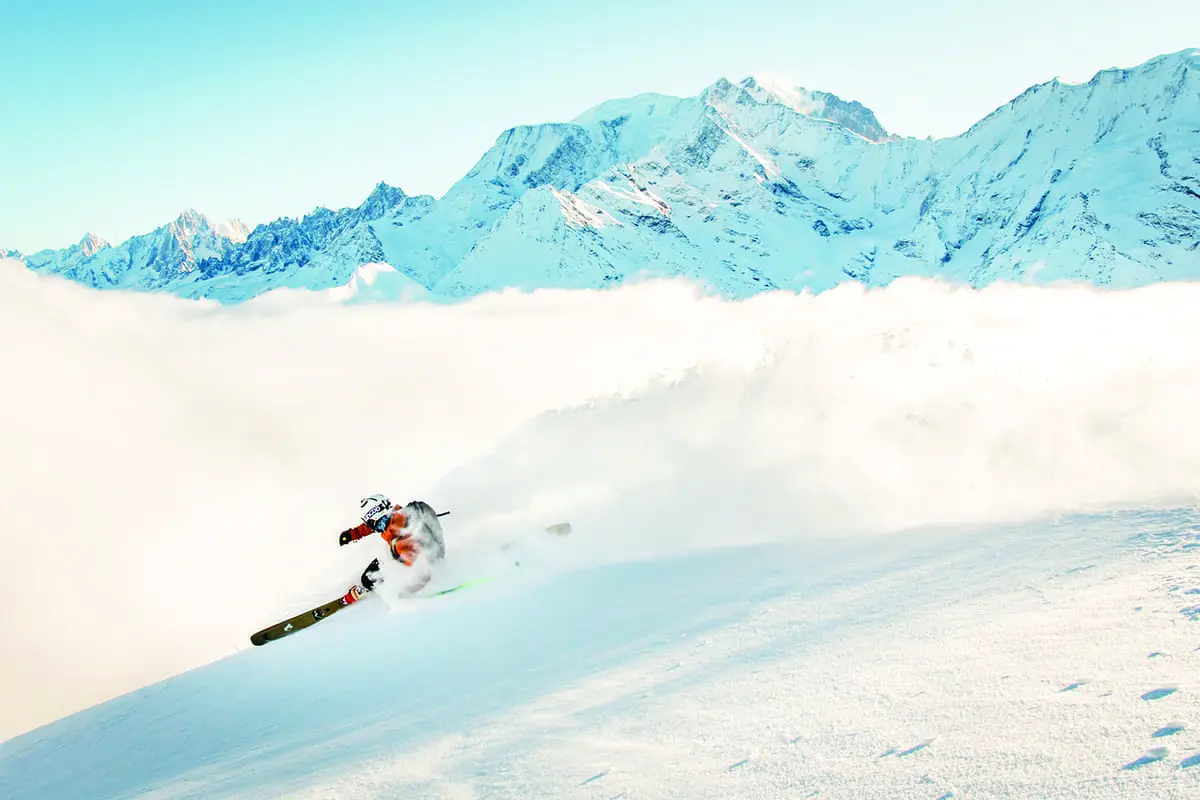Learn to telemark
Doing something the hard way requires a rare dedication, says Kevin Young. So flex your telemark muscles – those in the know will respect you for it...


If you prefer your coffee to be instant, or your cocktails pre-mixed in a can, then maybe telemarking won’t float your boat. But, if you grind your beans every morning or mix a mean margarita, maybe you should free your heels.
Doing something the hard way requires a rare dedication. Those in the know will respect you for it, those who don’t know just make you feel smug, because you know how amazing it feels to telemark and they will never get it. Still not convinced? Here are a few more reasons to telemark…
It slowed me down and kept me on easy terrain for a while, which my wife enjoyed enormously. I have lots of tele friends who tried telemarking while their partner or kids learned to ski. It makes blue runs challenging and enjoyable again.
Telemarking makes you stronger. The burning* in your quads is beyond belief to begin with. Don’t venture too far unless you know you have the legs to get back. Seriously, it will build leg strength like you’ve never seen with alpine skiing.
*Burning in the quads is just weakness leaving your body. All telemarkers are united in this pain.
It’s very sociable. You meet every telemarker on the mountain; everyone waves or stops to say hi while their quads recover. It’s like being in a subculture. There are even telemark festivals – you usually ski (and chat) all day, then party ’til you drop.
Festivals
It’s the ultimate one-ski quiver (if that’s your thing; I like lots of skis in my quiver). You can ski piste, powder, bumps and go touring on the same set-up no problemo. Get a good freeride ski and a lightweight binding and you’re good to go anywhere.
It’s gentler on the knees. Yes, really! Alpine skiing puts a lot of force through your knees in a very narrow range of movement. With telemarking, your knees are constantly flexing and extending. Your muscles will be burning, but your knees will cope just fine.
I’ve been asked many times: “What’s the advantage of that type of skiing?” The simple answer is that I am hooked on the feeling. I do it because, for me, it feels way better than alpine skiing. After my first telemark experience on the last day of a ski trip I came home and bought the gear. I’ve never looked back.
Telemark skiing was the original way to ski – it was winter transport. So, if you have snow you can go, simple as that. But in these days of organised resorts your choice of destination is vast. For the authentic experience make the pilgrimage to the Telemark inland region of southern Norway, home of Sondre Norheim, the inventor of the modern telemark technique.
If you’re heading to the popular alpine resorts you might have to search out rental gear, and if you want some lessons you may need to look even harder. But, it’s all there and Google is your best friend to find it all. Even better, Google ‘telemark festivals’ and start your telemark life there (see above). They always have beginner’s coaching and equipment on hand to convert the curious. I ski mostly in the Evasion Mont Blanc region, where there are many like-minded souls.
Look up Calumontagne in Les Contamines for some coaching and the best views of Mont Blanc in the Alps. Also checkout the courses offered by Tele Tracks, run by Brits Ben Langridge and Nicko Braxton.
A comfortable pair of boots will be the best investment you can make. The fit needs to be snug like an alpine boot. Go to a specialist fitter (one with telemark experience), get custom footbeds, and get the liners heat moulded while wearing rubber toecaps. The results will be worth it.
If you have some spare budget try ZipFit liners, they are expensive but so well made; mine are in their third pair of boots and still going strong.
The most essential thing is to find some tele mates. You’ll need to stop more often while the lactic acid in your legs fades. Other telemarkers will be sympathetic to your needs and are happy talking at length about each and every turn and transition as a way to pass the time during recovery breaks.
My top tip is always the same: get some coaching. Failing that, get a copy of Allen and Mike’s Really Cool Telemark Tips: it was my bible in the early days and I still refer to it when I feel like I’m losing my way. You can also find coaching options at many of the UK’s indoor snow slope.
Kevin Young has been a skier since the late ’70s progressing from Pontypool’s dry ski slope to his adopted home near Chamonix, where he has lived since 2014. Following 19 years with Snow+Rock, he now works with Alpspec as a UK agent for Elan, Roxa and G3. He made his first telemark turns in 2010 and a permanent commitment to free-heeling in 2015.
